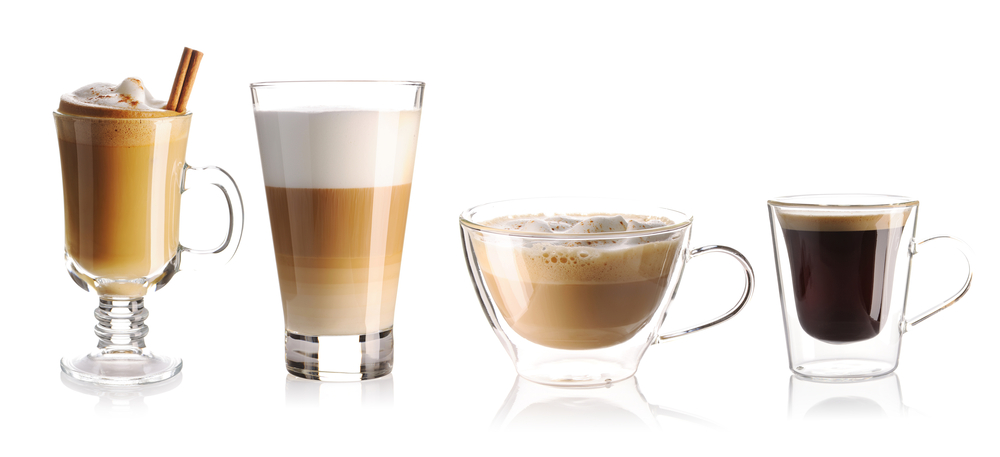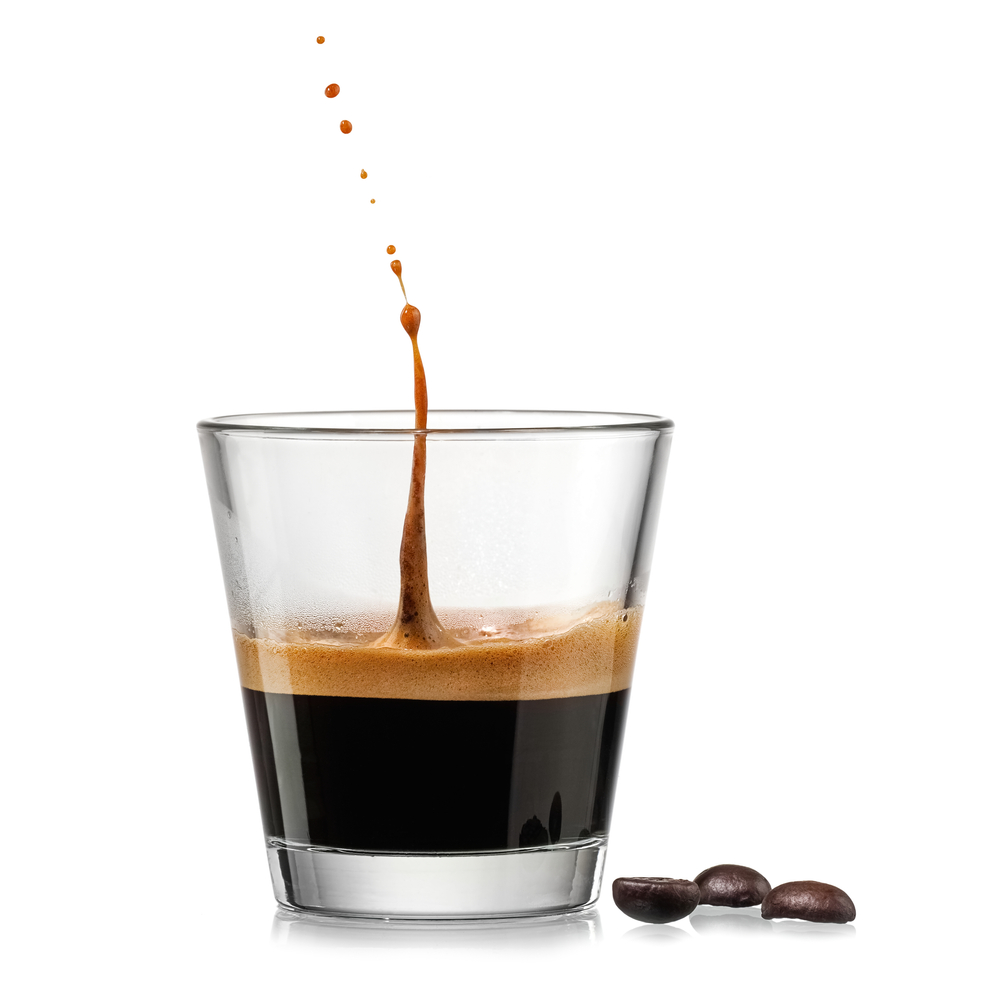Researchers have said that drinking coffee and tea at midlife may be associated with a reduced likelihood of physical frailty in late life and that caffeine is key to this with those who drank four cups a day faring best.
With that in mind independent coffee brand CafePod has shared its top tips to create barista-style coffee at home to enjoy more drinking occasions throughout the day.
Top tips from CafePod
· What temperature should the milk be?
When heating milk for coffee at home we recommend heating it to between 55°C and 65°C to get the best balance of temperature and flavour. If milk gets too hot then the flavour and texture can change – at over 70°C it develops a cooked flavour reminiscent of rice pudding and if you are steaming your milk the amazing texture of micro-foam disappears too.
This temperature guide is for cow’s milk and for plant milks it’s possible to take the milk a little hotter and still keep the texture and flavour. Oat milk is fast becoming the plant milk of choice for coffee in the UK.

- How can I get the best foamed milk at home?
On the topic of foaming the easiest way to do this is with the steam wand on an espresso machine. Some machines will have automatic foamers or temperature probes built in to help get that perfect balance of texture and temperature.
However, if you are in control our quick 101 is:
- Pour fresh cold milk into a pitcher so the milk comes just over halfway up the jug
- Quickly ‘purge’ the steam wand by turning it off and on to remove residual steam
- Position the tip of the steam wand just below the milk’s surface
- Turn it on to create a swirling motion, slowly lowering the steam wand as you introduce air and create foam.
- Keep an eye on the temperature, using a thermometer if you’ve got one
- Turn off the steam, tap the pitcher and give it a gentle swirl before pouring over your coffee to homogenise your foam
· I like my coffee sweet – should you add sugar?
This is very much a personal choice with taste preference or dietary considerations being a core reason for the decision to add sugar or not.
- Does adding sugar or syrup change the coffee experience?
It has two big impacts on coffee. Firstly on the taste balance of coffee and secondly, on how much flavour you can perceive. With taste, all coffee has a structural bitterness and acidity, which is modified by the way coffee is roasted. Sugar can balance bitterness and acidity when added to coffee.
The flip side of this is that this increased sweetness can mask flavour perception, especially in black coffee.
· Should you warm your cup or mug?
Preheating your cups can bring a professional barista touch to your coffee-making at home.
When you pour warm coffee into a cold cup the porcelain quickly absorbs heat from the coffee making it colder than desired. Cafes usually pre-warm cups to help maintain the ideal temperature of freshly made coffee.
This is true of lots of coffee drink sizes, and we think it makes a bigger difference with smaller drinks such as espresso, cortado, or coffees made with a Nespresso machine. This is because the smaller drink size drops in temperature quicker, so to savour your drink longer warming cups is a small touch that can bring a lot of enjoyment.
One easy way of warming empty porcelain cups at home is to pop the cups in the microwave for 30 seconds before you make your coffee and you’re coffee enjoyment will last longer.

· What is the best size/type of mug for my coffee?
The best advice here is to match the size of your drink with the size of the drinking vessel taking into consideration the impact of warming your cup mentioned above. A traditional espresso cup is around 60 ml in size, perfect for a short pour on a Nespresso machine. Conversely, if you love a big mug of freshly made filter coffee to sit at your desk with over the morning’s work then we’d recommend grabbing a large mug you can wrap both hands around to keep you caffeinated over the morning.
· What is the best coffee for which occasion?
While preference leads the way when it comes to coffee at different times of the day, there are no rules when drinking coffee, but there are a couple of general trends in coffee drinking..
Firstly people in northern Europe like to have milk in their coffee, especially in the morning and that’s why latte and flat white are many people’s breakfast drink of choice. Secondly, for those people drinking black coffee, there tends to be a preference for lighter brighter roasts early in the morning, and then fuller, rounder, sometimes fruitier coffees later in the day.
There is also a view that it’s not the done thing in Italy to have a cappuccino after breakfast, and the preferred drinks later in the day are espresso, americano or macchiato (for those people wanting a little milk in their coffee). Sometimes rules are there to be broken though!
With warmer weather and summer arriving it’s a great time to experiment with cold coffee over lunch at weekends. This could be anything from iced americanos or lattes if you have an espresso machine or Nespresso machine, to immersion cold brew made overnight in the fridge in advance.
· Does the quality of your water affect the coffee?
Water makes up 99% of your cup of coffee, so the quality of the water is crucial. Two starting points to look at are how hard the water is and whether the chlorine has been removed or not.
The hardness of the water, or how much calcium carbonate is dissolved in it, changes the way a coffee can taste massively. Generally, having a little bit of calcium carbonate is good, but if you’ve got moderately hard to hard water then taking some time to treat your water can deliver dividends and how delicious your coffee is. The easiest way to do this is to put it through a filter designed to reduce limescale. Some machines now come with filtering options because the lime scale can also damage the internal parts when making coffee, so if you live in hard water areas, we recommend taking advantage of these. These filters will also remove the chlorine from coffee which can add a chemical aftertaste to your brew.
If you live in an area with very soft water conversely you have the challenge of having too little calcium and mineral content in your water. Removing the chlorine is a great first step to improving your at-home coffee experience.
· How is best to store my coffee at home?
There are different answers to this question depending on if you buy beans, ground or capsule coffee to enjoy at home. Underlying the solution for each of these is the concept that oxygen needs to be kept away from roasted coffee to keep it fresh.
Aluminium capsules are the easiest because they are brilliant at keeping coffee fresh for months and months. Each capsule contains ground coffee and is flushed with a small amount of nitrogen just before sealing to push residual oxygen out. The aluminium and foil are a strong barrier to oxygen getting into the coffee, at CafePod we’ve tested capsules roasted two years before that still taste great when brewed through a Nespresso machine.
At CafePod we seal our bags of beans and ground coffee with nitrogen when we pack them to help keep it fresher longer. Once opened, oxygen can speed up the coffee staling process. With whole bean or ground coffee keeping your coffee away from oxygen can be done in several ways. Keeping the coffee in a hermetic jar or vacuum-sealed jar that reduces the amount of oxygen to come into contact with the coffee can add a week or two to the shelf life.

This staling process is faster with ground coffee than whole bean coffee because the surface area of ground coffee is so much bigger. This is part of the reason buying beans and having a grinder at home can elevate your coffee-drinking experience. Grinding as you need also benefits from the fact that lots of delicious aromas are trapped inside whole-bean coffee, only released when the coffee is ground. This is why grinding up to 15 minutes before brewing your coffee can make it so much more flavourful.
If you like buying coffee beans or ground coffee a couple of bags at a time, one quick trick is to put a sealed bag in the freezer until a day or two before you need it. Then take it out of the freezer to come up to room temperature before you open the bag. The freezing temperatures slow down the way oxygen interacts with coffee and keeps it much fresher.
· How often should you clean your coffee machine?
If you have a Nespresso or pod machine we always recommend purging a little bit of water through the machine before making a drink. This makes sure that any leftover water in the machine is removed before making your coffee this also helps get the machine up to the perfect temperature for your coffee capsule.
Whatever the type of machine you have we’d suggest also putting some cleaner through regularly to keep your coffee tasting great. Special coffee machine cleaner makes sure that the natural oils of roasted coffee are cleaned from the internal brewing chambers of all machines. For espresso machines and Nespresso machines, we would recommend doing this weekly. For electric filter machines or cafeterias it’s something to consider doing monthly to keep everything fresh.





